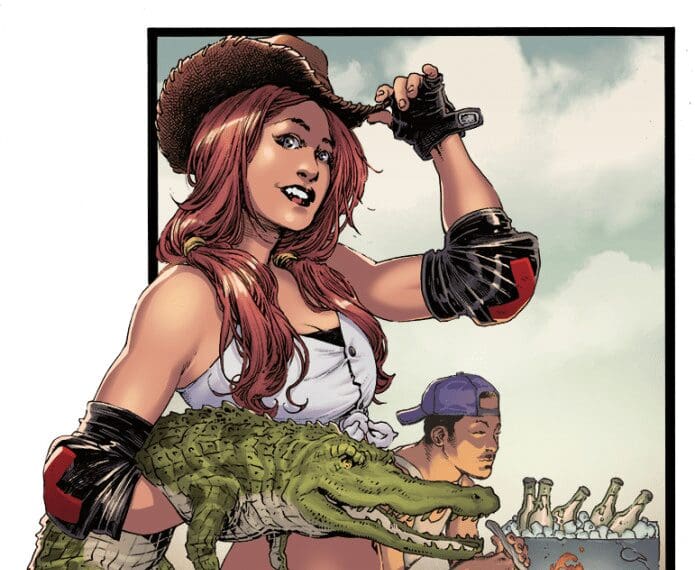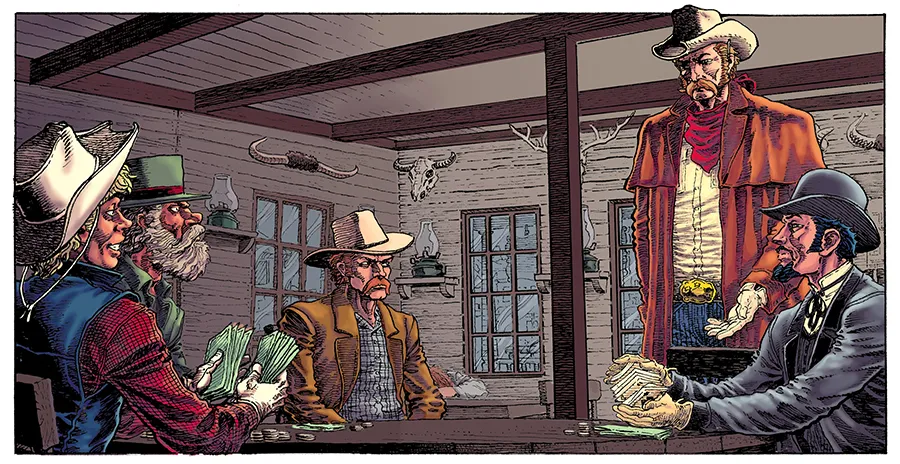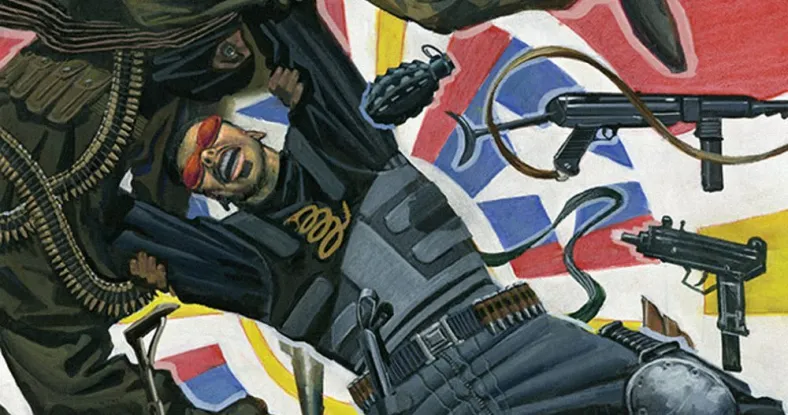
Where the major publishers used to view entertainment value above all, entertainment has been subsumed under the Woke ideology. Where once comic book editors were skilled story tellers, like Archie Goodwin, Stan Lee, and Denny O’Neil, today’s comic book editors have little interest in telling stories and see comic books as a tool to push their woke agenda.
The first attack on comic books came from the right, when Dr. Frederick Wertham wrote his infamous Seduction of the Innocent, claiming comics contributed to juvenile delinquency. Wertham zeroed in on EC’s line of crime and horror comics which pulled no punches in showing gore or violence. Yet those stories had a moral purpose. Crime does not pay. Wertham’s book resulted in hysteria. The United States Senate Subcommittee on Juvenile Delinquency commenced in April, 1954, presided over by Senators Hendrickson, Estes Kefauver (D, TN,) Thomas Hennings Jr. (D, MO,) and William Langer (R, ND.) The national hysteria resulted in the Comics Code Authority, quickly cobbled together by the Comics Magazine Association of America, to stave off government interference. Self-censorship was preferable to oversight by a group of men who had no knowledge of comic books and were openly hostile. The words “crime,” “horror,” and “terror” were verboten. By 2010, only DC, Archie, and Bongo stuck to the code. When Bongo and Archie dumped it, the Code was effectively dead.

Ironically, Al Feldstein’s and Joe Orlando’s racial allegory “An Eye For An Eye” drew the ire of the committee because the central character was black. Judge Charles Murphy ordered the final panel changed to a white man, which would have nullified the message. My, how things have changed! Publisher William Gaines soon quit comics altogether to concentrate on his humor magazine, Mad.
Of course self-censorship was nothing new. The movie industry did it with their ratings system. The ‘X’ rating was seen as the kiss of death, mostly denoting pornography. Brian DePalma’s Greetings was the first X-rated movie. Midnight Cowboy was the first X-rated movie to win the Best Picture award, back when the Oscars mattered.

Superman, Captain America, and many other superheroes were unabashedly patriotic. That was part of their appeal. The iconic cover of Captain America slugging Hitler has probably been reprinted more often than any other cover. Contrast that with today’s Woke comics, where mighty Marvel has reduced itself to leftist propaganda with Barack Obama on the cover of Spider-Man, or on his own comic book published by Boom!, and on Dynamite’s Army of Darkness. Contrast that with comics’ treatment of Trump, such as The Unquotable Trump which depicts him as a boorish monster, or Image’s Savage Dragon, where Trump is depicted as a hundred foot tall monster chasing down immigrants and superheroes shouting, “KILL THEM!” “KILL THE ALIENS!” Never mind that this has nothing to do with reality, that under Trump all minorities made the biggest gains in income ever seen, that Trump is the opposite of a racist, a man who invited Jennifer Hudson and family to stay at Trump Towers gratis as long as they wished following the murders of her mother and brother.
Which brings us to the NARRATIVE and the AGENDA.
You know the NARRATIVE. Man bad. Woman, bi, trans, neuroqueer, seventy-six other sexual orientations good. White bad. All other races good. America evil. All other countries good, especially the most vile and oppressive regimes. Sean Penn and Oliver Stone sucking up to Venezuela’s Maduro or Panama’s Noriega. Petroleum bad. Electricity good. Never mind where the electricity originates. Don’t ask. Never mind how they get the heavy metals necessary for the batteries. Don’t ask. Out of sight, out of mind.

You know the AGENDA. The destruction of the individual in favor of an all-powerful state. The destruction of federalism in favor of centralized planning. There is no idea too stupid for the left to embrace. Green energy. Racial reparations. Out and out racism, in giving preferential medical treatment or financial aid to blacks first. The only people who line up behind white Americans are Asians, most of whom don’t seek government help, and are therefore a threat to the left.
Mad magazine and competitors like Cracked gained traction after the comic implosion of the fifties, and the imposition of the Comics Code Authority. Mad and Cracked were large, black and white humor magazines that displayed alongside Time, Sports Illustrated, and other familiar periodicals. They represented a departure from superheroes in that they were not meant to be taken seriously.
Comics is the most forgiving medium on earth. You can get away with things in comics you couldn’t in any other medium. Look at Superman. Debuting in 1939, it wasn’t until Richard Donner’s Superman in 1978 that you could believe a man could fly. Sure, there were film adaptations before, most notably George Reeves in the TV show, serialized Buck Rogers and Batman, to name a few. But nobody took them seriously. Certainly not as art. Thanks to technical advancements and CGI, Richard Donner’s Superman looks quaint. The audience loved it because it took itself seriously, and Christopher Reeve was the perfect Superman.

RELATED: The Dark Herald: The Wolves are Circling Disney With Reedy Creek Legal Problems
Look what else you can do with comics. Flaming Carrot. Teenage Mutant Ninja Turtles. Squirrel Girl. The Phantom Blot. This last was a Disney title, one of Mickey’s arch-enemies, from the days when Disney was dedicated to offering wholesome, family-friendly entertainment. Hard to believe today’s Disney, obsessed with grooming kindergarteners and children, is the same corporation.
“Walt Disney Enterprises LLC made a huge mistake going woke, according to its very own CEO, Joe Barron. Barron says the company made a hasty decision and already regrets it.
“People say they want this stuff. Then we do it and the park loses half its guests in a single afternoon,” said Barron, “people just started walking out when Ariel came out waving a Pride Flag.”
Gabe illustration of Ariel waving a Pride Flag.
In the sixties, a new form of comic book emerged, the underground. Produced by lone proprietors, uninterested in newsstand distribution, this new breed of comic ushered in an era of autobiographical, anything-goes stories whose repercussions are still being felt today. As Chairman Mao was fond of saying, “Let a hundred flowers bloom.”

The sixties. The Summer of Love. Drop out, drop acid, do your thing. If it feels good, do it.
Comics are just ink on paper, and the rise of so-called alternative papers such as The East Village Other or the Berkeley Barb offered a blank canvas to illustrators for whom corporate publishing was anathema. They weren’t interested in company characters or newsstand distribution. They were interested in telling their own stories, sometimes under the influence of mind-altering substances.
Many great artists and story-tellers have labored in the weed-grown vineyards of the underground, including R. Crumb, Gilbert Shelton, Rick Griffin, Dori Seda and Trina Robbins. While much of the work was intensely personal and often very funny, much of it was subversive, taking aim, as leftists will, at square culture. The main difference between the great underground comics and mainstream publishers today was that the undergrounders were actually entertaining. Gilbert Shelton had a field day lampooning law enforcement, particularly Norbert the Nark and the FBI establishment, yet his comics never fail to entertain. They are so successful that here, fifty years later, his greatest creation, The Fabulous Furry Freak Brothers, is now a cartoon on Tubi. Alas, it’s crude and vulgar and comes nowhere near the comic genius of its creator.
R. Crumb, arguably underground’s greatest creator has done more than his fair share to attack straight society, with strips like Whiteman, Mr. Natural, which relentlessly skewers hapless white man Flakey Foont, and Angelfood McSpade, an offensive take on black women. But that’s Crumb’s gift. He is fearless, unafraid to commit his deepest, darkest desires to paper. As a result, he has been banned in Australia as pornographer. Is it pornography? Or is it a brilliant satire on pornography? Does it matter?
None of it was mean-spirited. He built straw men and he knocked them down. That’s what cartoonists do. Crumb lives in rural France now with his wife Aline Kominsky, with whom he creates sedate, boring husband and wife cartoon strips. But for most of his life, Crumb was driven, resulting in a deep library. Richard Nixon was a frequent target of the undergrounders, often depicted as male genitalia. But these were undergrounds. Not intended for mass distribution. You had to go to a head shop to find them. Many head shops were busted for pornography. It was subversive as hell and shaped the perceptions of an entire generation.
Now Freak Brothers is a lame cartoon on Tubi. Oh well.

RELATED: Cancel Pigs Maul Rob Liefeld For Posting “Woke Comics Twitter” Is Real And To Be Avoided
Political correctness reared its ugly head in 1970, in Green Lantern #76, written by Denny O’Neil and drawn by Neal Adams. “No Evil Shall Escape My Sight” was about racial inequality, a story comics seldom addressed. Green Lantern gathers dirt on a slumlord named Jubal Slade. Toward the end of the story an old black man addresses Green Lantern.
“I been readin’ about you, how you work for the blue skins…and on a planet some place you helped out the orange skins. Only there’s skins you never bothered with. The black skins! I want to know how come?
“Answer me that, Mr. Green Lantern!”
Green Lantern hangs his head. “I…can’t…”
Bam. And just like that the comics got woke. O’Neil was a gifted writer, and my editor. He was never less than fair. But until Green Lantern #76, comics were apolitical. Other Green Lantern stories stories about air pollution and drug addiction followed. Compared to what had gone before, it was realistic and daring. But was it fair?
Years later, I interviewed Denny about those issues and he said, “I sometimes wonder if sixties liberals didn’t create the atmosphere for today’s extreme politics and name calling.”
The camel got its nose in the tent, but it was a polite camel, still dedicated to entertainment. Emboldened, writers began to veer toward realism. You didn’t train to write comics. It was a job you got from an uncle or a friend of a friend. “Hey! Wanna write some stories?”
In 1971, the United States Department of Health approached Marvel about showing the dangers of drug abuse, resulting in the famous Spider-Man #96 – 98, depicting Harry Osborn’s battle with drug abuse. The drugs were never specified.
Sturgeon’s Law is immutable. “Ninety per cent of everything is crap.”

There were no great rewards for or in comics until fairly recently, when conventions entered the scene, particularly the Godzilla of conventions, the San Diego Comic Con. Comics were going Hollywood. Originally held in the genteel shabby El Cortez, the con moved to the spiffy new San Diego Convention Center in 1991.For comics, it was the Academy Awards, Tonys, and Grammys wrapped into one. In 2008, Marvel produced its first Iron Man movie.
The convention center is enormous, big enough to house separate kiosks, houses within houses, for Marvel, DC, Dark Horse, Malibu, but also for the movies. Enormous displays of the latest Marvel heroes in larger than life poses, something out of the Roman Forum.
Across the street from the Convention Center, Warner Brothers erected a larger-than-life bronze of Superman. Actors and directors became routine visitors. Suddenly, Hollywood was paying very close attention to the comics. Hollywood is the epicenter of groupthink. Everybody is on the same page. If they’re not, they’re out. As Christian Toto points out in his book, Virtue Bombs, “Tinseltown has always been driven by fear, in one shape or another… Celebrities fear being ‘canceled’ for past or present sins (or just the appearance of committing them). They worry about saying the wrong thing (or the right thing without enough enthusiasm), or not leaning too hard into the cause du jour.”
As comics’ stock was rising, their sales were sinking. There are many reasons for this, not the least of which is the rise of the video game. The truth is, the average four or five dollar comic can’t hold a candle to a good video game in terms of bang for your buck. The comic takes fifteen minutes to read and evaporates from the memory. Marvel and DC have been using crude dramatic tricks to hype their books for over forty years. Superman’s dead! Superman’s back! Miles Morales replaces Peter Parker! New number ones! Comic book collectors prize their number ones, which were often very valuable, especially if they were from the golden or silver ages. By now the trick is dead.
Marvel’s transition from entertainment to woke occurred gradually, then all of a sudden.
In 2000, Joe Quesada became editor in chief.
“On February 10, 2010, Quesada issued a public apology for the content of Captain America #602, which had drawn condemnation from national Tea Party leaders, for its depiction of an apparent Tea Party protest, and the black superhero Falcon, reacting to it by saying that he would not be welcomed by a crowd of “angry white folks.” Also at issue was the slogans on some of the signs held by the protestors. Quesada stated that future reprints of that story would have the offending material omitted.” –Wikipedia.
That would be the last time mainstream comics acknowledged conservatism positively.
What do you think? Leave a comment!
Mike Baron’s comics are available on his website.
NEXT: The Dark Herald: RE: Animation – Superman (1940) And Its Cultural Appeal

This is from my substack. mikebaron.substack.com For those interested in Florida Man or my other graphic novels, please go to baroncomics.com
Superman’s debut was in 1938. The leftard seed was kinda’ there from the start. The villains were dastardly capitalists who opposed unions, the New Deal, etc.
I learned about Wertham from reading “The Great Comic Book Heroes” several times as a boy. He was also mentioned in the foreword to “Batman: From the ’30s to the ’70s.” I grew up thinking he was some kind of anal-retentive reactionary killjoy bellyaching about a lack of propriety. And, in fact, he was often associated with “McCarthyism.”
But looking back at the criticisms leveled at him in those books, it’s not as clear-cut as I was led to believe. He suspected subversive sexuality was being injected into this entertainment for kids. Mind you, I never wanted to believe this, but in my younger days I read every Golden Age comic story I could get my hands on, and Wertham was not a crackpot for believing that. Of course it was all tame by today’s “standards,” but there was some kinky stuff and some possible dog whistles for sexual deviants in the comics.
Wertham’s observations about Wonder Woman have been pooh-poohed for 80 years, but it’s difficult now to miss the lesbian subtext and the bondage elements. You can’t deny the gender-bending aspect of the character and tropes. In fact, William Moulton Marston created her for the very purpose of sowing gender confusion among children.
Some of the panels in the Batman comics (after his grim vigilante phase, during dis daylight hours “duly deputized Gotham law enforcement officer” phase) were drawn almost certainly to be homoerotic dog whistles.
The Marxism/cultural Marxism in comics (and all entertainment) is nothing new, and didn’t happen overnight. It has always been there, but subversive writers and artists couldn’t get away with blatantly mashing it in the faces of the population back when America was a republic with a Christian majority and public servants who at least pretended to represent the people. They not only get away with it now, but are lionized for it. In fact, we’re past the point where it’s virtue-signaling. It’s obligatory or mandatory, now. Because a depraved, reprobate society tolerates pretty much anything except the truth.